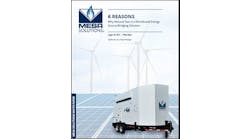By Elisa Wood
July 30, 2009
If there was still any question about the economic value of energy efficiency, it was put to rest this week by a McKinsey & Company report. The United States could save $1.2 trillion and generate 900,000 new jobs through better energy management, according to “Unlocking Energy Efficiency in the US Economy.”
Sounds good. But there is a problem. We’ll need billions of keys to do the unlocking. Efficiency potential rests in “100 million buildings and literally billions of devices,” the report says. “This dispersion ensures that efficiency is the highest priority for virtually no one.”
In other words, anyone have a magic wand handy?
Efficiency is a tough to sell, not because people don’t want it, but because it doesn’t exist as a tangible item to buy, like say, a solar panel. Efficiency is not even an idea. It’s a way of operating every electric item in our highly electric world. No one is master of this universe. Even if government sets out mandates for buildings and appliances, the homeowner still may not turn off lights before bed, or the factory owner may decide against the cogeneration unit in favor of the familiar status quo.
It will take significant effort – far more than what is offered in the federal stimulus package – to put so many keys in so many locks. In fact, the $20 billion in stimulus will create only a “blip” compared to the vast potential, says Lisa Wood, (no relation to the writer of this blog) executive director of the Institute for Electric Efficiency, part of the Edison Foundation.
Indeed, the McKinsey report finds that to unlock this potential over the next decade, the US needs to make a $50 billion/year investment. And if a decade seems like a long time, consider that that cell phones, microwaves and radio took 10-15 years to scale up.
“There are so many different pieces. Some of it is in changing the mindset about using energy; some of it is about introducing new technologies, like smart thermostats and home area networks. I don’t think that is far away.” Of course, the technology must be easy for people to use, she says. We learned a long time ago that people don’t come home from work and say, “What can I do now to save energy?”
The report recommends “a holistic combination of solutions,” such as recognizing efficiency as an important energy resource, launching a portfolio of strategies that work nationally and regionally, finding ways to overcome the significant upfront costs for efficiency installations, aligning various stakeholders, and fostering technology. McKinsey goes on to describe specific programs and strategies to bring about these solutions.
The McKinsey report marks an important step in the right direction, Wood says, by getting the efficiency story “out there in a very organized way to the larger community.” Not a magic wand, but at least a pointer in the right direction.
The report is available at http://www.mckinsey.com/clientservice/electricpowernaturalgas/US_energy_efficiency/.
Visit Elisa Wood at www.realenergywriters.com and pick up her free Energy Efficiency Markets podcast and newsletter.





